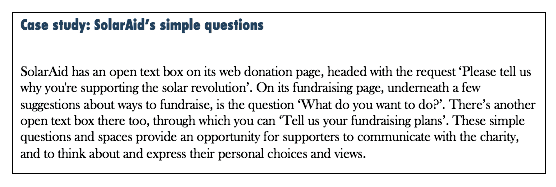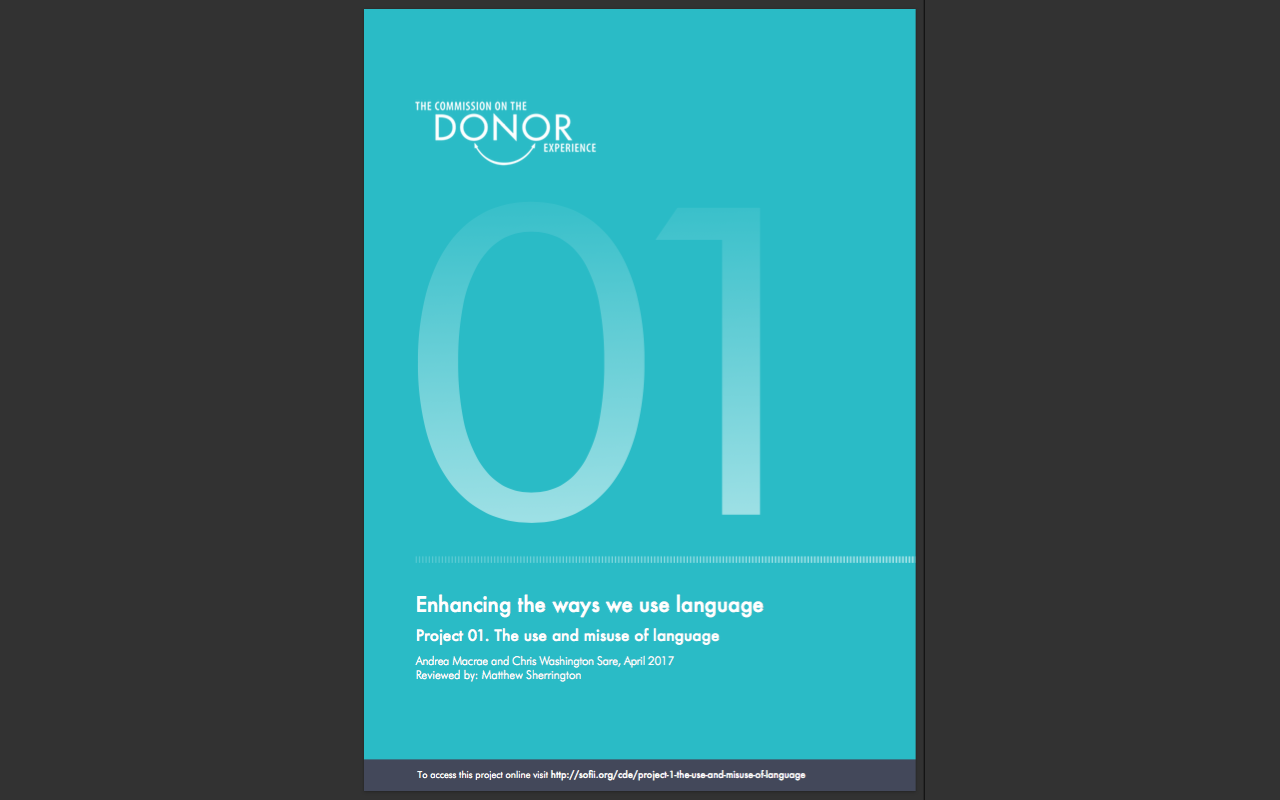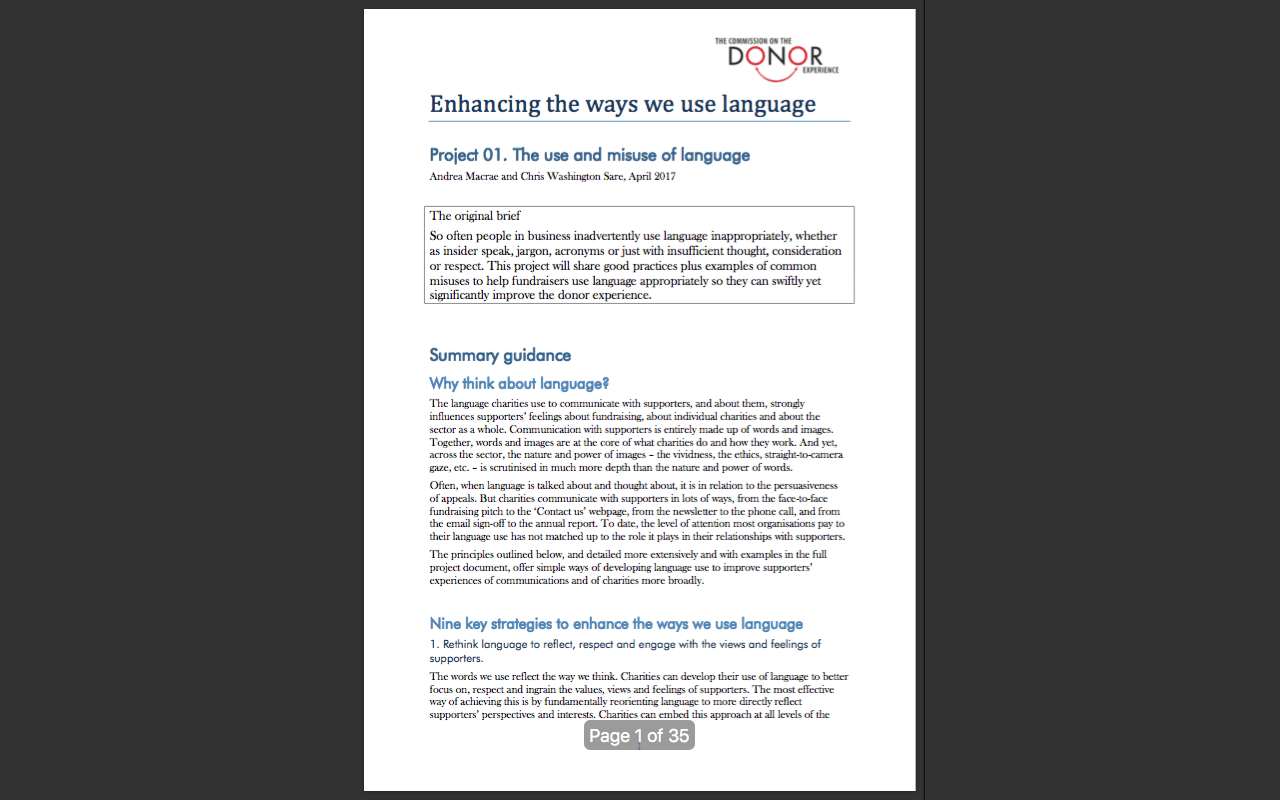CDE project 1 section 7: invite feedback and turn it into dialogue.
- Written by
- The Commission on the Donor Experience
- Added
- April 25, 2017
Enhancing the ways we use language
Andrea Macrae and Chris Washington Sare, April 2017
Reviewed by Matthew Sherrington
7. Invite feedback and turn it into dialogue.
The views of supporters are invaluable to charities, and yet most charity communications are still one-way. Often, the only form of response a charity seems interested in is a direct debit. Feedback, though, offers precious insights into supporters’ personal views and ideas, and is crucial to the development of a relationship and a sense of connection. [1] Fostering dialogue also helps to create a sense of collaborative teamwork in tackling the cause, reduce a sense of ‘them’ and ‘us’, and develop a sense of identification between the supporter and the charity. Feedback and dialogue, though, first requires an explicit, appealing invitation and a simple way for supporters to offer their thoughts.
Social media has created new contexts for dialogue and direct response. Daniel Newman writes in Forbes magazine that social media is the new primary tool through which organisations should “focus on engaging your audience; asking them for their opinions, comments, and ideas on how you could make things better for them. [… On] social media platforms, the main focus should be on listening to the customer." [2]
This listening should extend beyond social media though. Whatever your medium, every communication is an opportunity to engage supporters – to explicitly ask for their input and their opinions. A dedicated space for input demonstrates the charity’s real interest in supporters’ views. The invitation also encourages supporters to reflection on their own opinions, raising supporters’ conscious awareness of their feelings about the cause and organisation. Each of these elements of the invitation for feedback powerfully enhances supporter satisfaction.

[1] Newman, D. (2016), ‘Social media is no longer a marketing channel, it’s a customer experience channel’, Forbes, http://www.forbes.com/sites/da...
[2] MacQuillin, I. Sargeant, A. & Shang, J. (2016), Relationship fundraising: Where do we go from here? Vol. 2 – Review of theory from social psychology. Plymouth: Centre for Sustainable Philanthropy, Plymouth University, p. 20; Hibbert, S. (2016), ‘Charity communications: Shaping donor perceptions and giving’, in The Routledge Companion to Philanthropy, eds T. Jung, S. D. Phillips, & J. Harrow (London, Routledge), pp. 102-115: p. 110.
Talking with, rather than just at, supporters, though, is only achieved through genuine dialogue – through listening, acknowledging and responding to supporters’ input. Take up supporters’ topics, talk about the things that interest them, and reflect back the language they use and the values they express. This reinforces the connection between a charity and its supporters and creates a deeper exchange.

A strategy for a) explicitly inviting feedback, b) processing feedback, and also c) acting on feedback, and d) turning feedback into dialogue, is crucial for authentic, two-way communications. Real dialogue requires careful resourcing and management, but the rewards for supporters, charities and the sector as a whole can be significant.






















